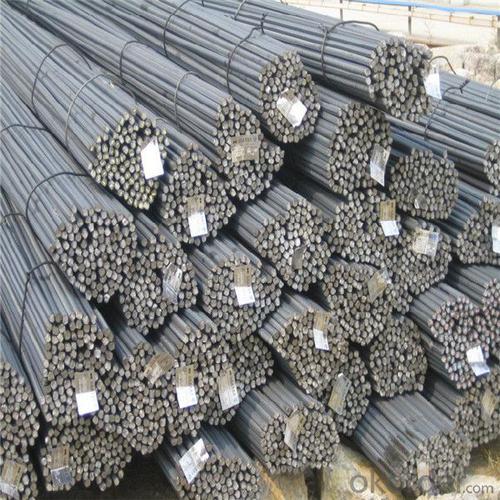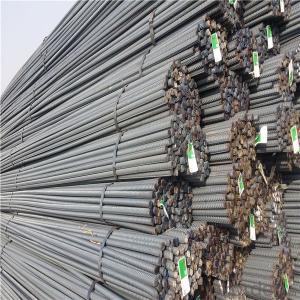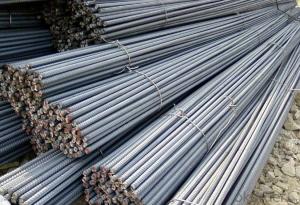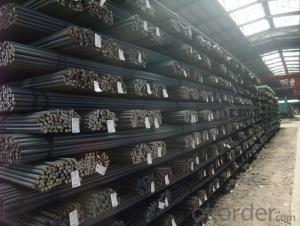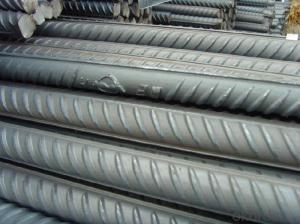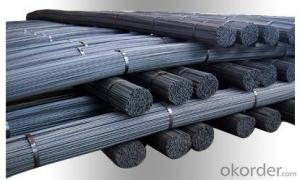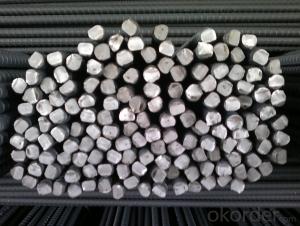Material steel rebar high quality from China
- Loading Port:
- Guangzhou
- Payment Terms:
- TT OR LC
- Min Order Qty:
- 100 m.t.
- Supply Capability:
- 19000 m.t./month
OKorder Service Pledge
OKorder Financial Service
You Might Also Like
Specification
Rebar has ridges that bind it mechanically to the concrete with friction, it can still be pulled out of the concrete under high stresses,
an occurrence that often precedes a larger-scale collapse of the structure. To prevent such a failure, rebar is either deeply embedded
into adjacent structural members, or bent and hooked at the ends to lock it around the concrete and other rebars. This first approach increases the friction locking the bar into place while the second makes use of the high compressive strength of concrete.
Common rebar is made of unfinished steel, making it susceptible to rusting. As rust takes up greater volume than the iron or steel
from which it was formed, it causes severe internal pressure on the surrounding concrete, leading to cracking, spalling, and ultimately, structural failure. This is a particular problem where the concrete is exposed to salt water, as in bridges built in areas where salt is
applied to roadways in winter, or in marine applications. Epoxy-coated rebar or stainless steel rebar may be employed in these situations at greater initial expense, but significantly lower expense over the service life of the project. Fiber-reinforced polymer rebar is now also being
used in high-corrosion environments
Features
1、Pure steel quality, stable chemical contents, small tolerance.
2、Constant Quality, good drawing performance.
3、High dimension accuracy degree, accuracy degree of Level C up to 80%, smooth surface, less scale, easy to be pickled.
4、Automatic bundling with 4 lines by Machine in tidy and good looks
5、Big high quality percentage, small coil percentage, and heavy coil weight for Hard Coil.
6、High sorbitizing percentage.
Product Description :
Chemical composition (%): | Steel | C | Si | Mn | P | S | Ceq | ||||
HRB335 |
0.25 |
0.80 |
1.60 |
0.045 |
0.045 | 0.52 | |||||
HRB400 | 0.54 | ||||||||||
HRB500 | 0.55 | ||||||||||
Mechanical properties | Steel | Rel/ MPa | Rm/ MPa | A/ % | Agt/ % | ||||||
≥ | |||||||||||
HRB335 | 335 | 455 | 17 |
7.5 | |||||||
HRB400 | 400 | 540 | 16 | ||||||||
HRB500 | 500 | 630 | 15 | ||||||||
Package: | Standard export packing or as customer's request | ||||||||||
Application: | Construction, building, bridge, road. ect | ||||||||||
Payment terms | 1).100% irrevocable L/C at sight. | ||||||||||
Delivery time | 15-30 days after receipt of L/C or deposit by T/T | ||||||||||
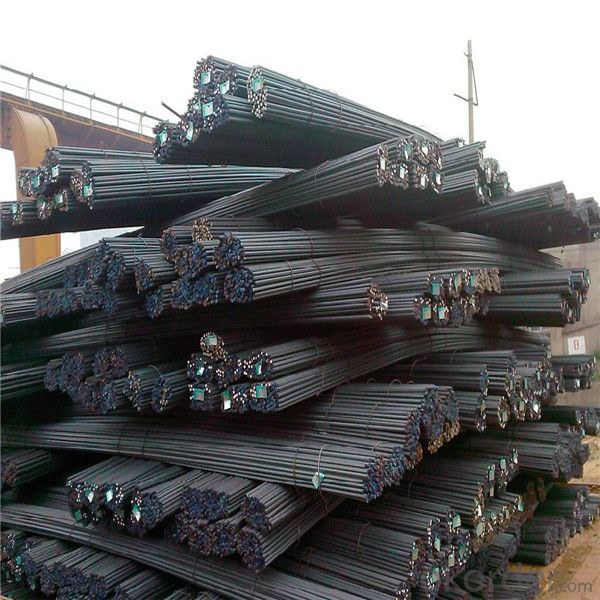
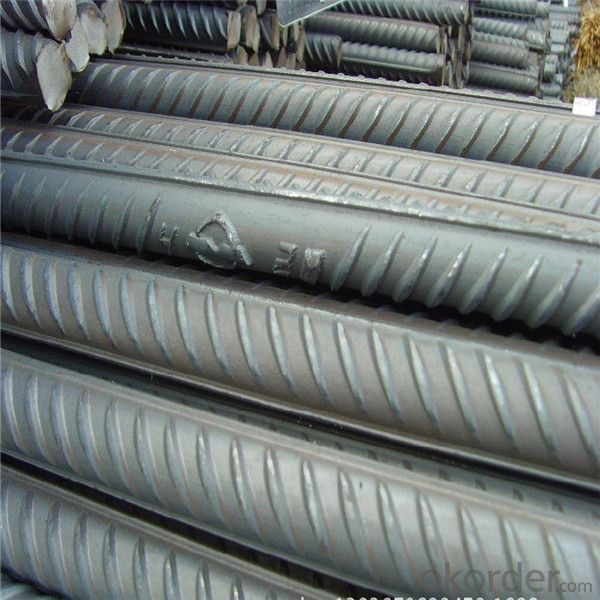
Packing:
In bundles, each bundle weight 3.5 tons. Load by container or by bulk verssel.
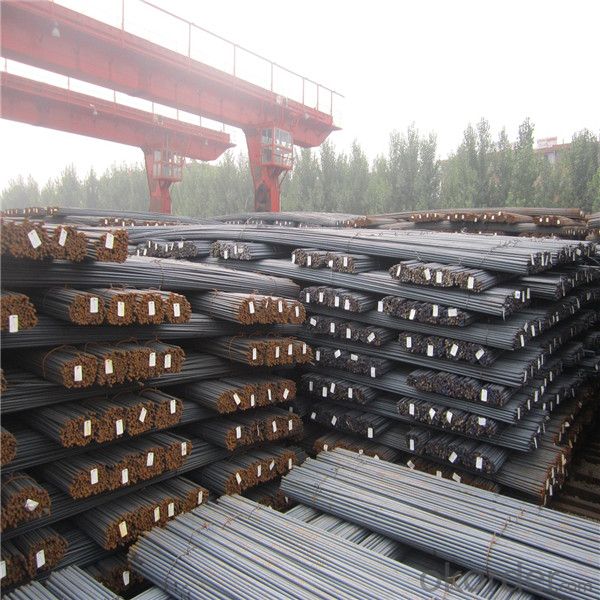
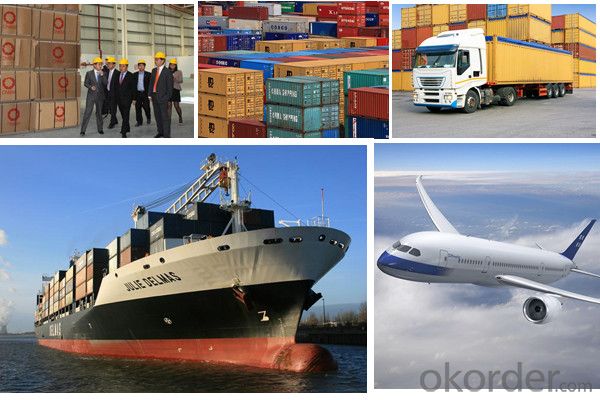
Our service
(1) We cooperate with famous factories with advanced equipment and well trained workers.
(2) We can provide factory price with trading company service.
(3) We continuously work on the improvement of our processes, guaranteeing consistently high standards
of quality to keep none compensation.
(4) We guarantee 24 hours response and 48 hours solution providing service.
(5) We accept small order quantity before formal cooperation.
(6) We deliver the agreed quality at the agreed time, reacting to changes in customer wishes in a flexible way.
(7) Due to our volume and selling power, we have excellent freight rates with shipping lines.
(8) We strive to always be fair and honest in our dealings with customers.
(9) We strive to work together with customers to achieve much more than we can achieve alone.
(10) Through our passion and commitment we aim to be a market leader in all our key markets. To maintain
our position as market leader we must continue to add value in all that we do.
FAQ:
1.Q: What's your MOQ(minimum order quantity)?
A: One full container, mixed acceptable .
2. Q: What's your packing methods?
A: Packed in bundle or bulk ..
3. Q: How can I buy CNBM products in my country?
A:Please send us an inquiry or email ,we will reply to you if there is distributor in your country
4. Q: Can we visit your factory?
A: Warmly welcome. Once we have your schedule, we will arrange the professional sales team to follow up your case.
5. Q: How long does it take to get the product if i place an order?
A:With the process of your requirements,we will pack and deliver in 3-7 days. If it is by sea shipment,it will take 15-45 days depending on different locations
- Q: What is the effect of steel rebars on the formwork design?
- The presence of steel rebars in formwork design provides structural reinforcement and improves the overall strength and durability of the structure. The rebars help distribute the load and forces more effectively, allowing for the creation of thinner and lighter formwork designs. Additionally, steel rebars can be used to reinforce specific areas or joints where additional strength is required. Overall, incorporating steel rebars in formwork design enhances the structural integrity and longevity of the construction project.
- Q: What are the common sizes of steel rebars?
- The common sizes of steel rebars range from 6mm to 40mm in diameter.
- Q: How do steel rebars affect the overall acoustic properties of a structure?
- Steel rebars, also known as reinforcement bars, play a significant role in the overall acoustic properties of a structure. The presence of steel rebars can have both positive and negative effects on the acoustic characteristics of a building or infrastructure. One of the primary ways steel rebars affect the acoustic properties is through their ability to transmit sound vibrations. Steel is a good conductor of sound, meaning that it can easily transmit sound waves. Therefore, when steel rebars are present in a structure, they can act as pathways for the transmission of sound, allowing it to travel more easily throughout the building. This can lead to increased noise levels and reduced acoustic privacy, as sound waves can travel through the steel rebars and reach different parts of the structure. On the other hand, steel rebars can also contribute to the overall sound insulation of a structure. When properly installed and integrated with other construction materials, such as concrete or acoustic insulation materials, steel rebars can help reduce the transmission of sound waves. The rigidity and mass of steel rebars can help dampen the vibrations caused by sound waves, thereby reducing the amount of sound that passes through the structure. This can enhance the acoustic comfort within the building, making it quieter and more suitable for various activities that require reduced noise levels. It is worth noting that the impact of steel rebars on the acoustic properties of a structure depends on various factors, such as the thickness and density of the surrounding construction materials, the arrangement and spacing of the rebars, and the overall design of the building. Additionally, the use of additional acoustic treatments, such as sound-absorbing panels or insulation, can further improve the acoustic performance of a structure by mitigating the negative effects of steel rebars. In conclusion, steel rebars have a significant influence on the overall acoustic properties of a structure. While they can facilitate the transmission of sound waves, they can also contribute to sound insulation when combined with appropriate construction materials and techniques. Proper design and implementation, along with the use of additional acoustic treatments, are crucial in achieving a desired acoustic environment in buildings and infrastructure where steel rebars are present.
- Q: Can steel rebars be used in the construction of sports stadiums or arenas?
- Yes, steel rebars can be used in the construction of sports stadiums or arenas. Steel rebars are a commonly used reinforcement material in concrete structures, including stadiums and arenas. They provide strength, durability, and structural integrity to the concrete, making them suitable for the demanding requirements of sports facilities.
- Q: What are the different methods of reinforcing concrete with steel rebars?
- Steel rebars are commonly used to reinforce concrete in several different ways, each designed to improve the strength and longevity of the structure. Here are some of the methods employed: 1. Traditional Reinforcement: To reinforce concrete using this method, steel rebars are placed in a grid pattern within the concrete formwork prior to pouring. Both horizontal and vertical rebars are arranged to create a network of reinforcement throughout the structure. This technique is frequently utilized in large-scale concrete structures like buildings and bridges. 2. Post-Tensioning: This technique is employed in large structures requiring high tensile strength. After the concrete has been poured and hardened, steel rebars are placed in ducts or sleeves within the concrete and subsequently tensioned using hydraulic jacks. This process reduces tensile stresses in the concrete, making it more resistant to cracking and increasing its load-bearing capacity. 3. Pre-Tensioning: Similar to post-tensioning, pre-tensioning involves tensioning steel rebars before pouring the concrete. The rebars are placed in a precast concrete form and tensioned using hydraulic jacks. Once the concrete has hardened, the tensioned rebars transfer their force to the concrete, enhancing its strength and reducing the risk of cracking. 4. Welded Wire Mesh: Instead of individual rebars, this method employs a grid of welded steel wires to reinforce the concrete. The mesh, made of high-strength steel wires, is welded together at intersections. This technique is commonly used in smaller concrete structures like sidewalks, driveways, and patios. Welded wire mesh provides uniform reinforcement throughout the concrete, minimizing the risk of cracking. 5. Fiber Reinforced Concrete: Fiber reinforced concrete (FRC) involves adding small fibers made of materials like steel, glass, or synthetic polymers to the concrete mix. These fibers are distributed throughout the mix, improving its tensile strength and reducing the likelihood of cracking. FRC is often used in situations where traditional steel rebars are unsuitable, such as thin slabs, precast elements, or shotcrete. Overall, these diverse methods allow engineers and construction professionals to enhance the strength, durability, and performance of concrete structures. The choice of method depends on factors like the structure's size and type, required strength, and construction constraints. It is crucial to consider these factors and consult with engineering professionals to determine the most suitable method for each specific project.
- Q: Can steel rebars be used in renovation or retrofitting projects?
- Yes, steel rebars can definitely be used in renovation or retrofitting projects. Steel rebars are commonly used in construction to reinforce concrete structures, and they can also be used in renovation projects to strengthen existing structures. When renovating or retrofitting a building, it is often necessary to reinforce the existing structure to meet modern building codes or to support additional loads. Steel rebars can be used to strengthen walls, columns, beams, or slabs by adding additional reinforcement to the concrete. By incorporating steel rebars into a renovation project, the structural integrity of the building can be improved, ensuring its safety and longevity.
- Q: What are the common methods of cutting steel rebars on construction sites?
- There are several common methods used to cut steel rebars on construction sites. These methods are chosen based on the specific requirements of the project and the available equipment. One commonly used method is using a rebar cutter, which is a handheld tool specifically designed for cutting steel rebars. These cutters are operated manually and can easily cut through rebars of varying diameters. They are convenient to use on-site due to their portability and ease of operation. Another method is using a chop saw, also known as a cut-off saw or an abrasive saw. This method involves using a high-speed abrasive disc to make precise cuts on the steel rebars. Chop saws are commonly used when there is a need for accurate and clean cuts, especially when multiple rebars need to be cut to the same length. Oxy-fuel cutting is another method that can be used for cutting steel rebars. This method involves using a torch that combines oxygen and a fuel gas, typically acetylene, to create a high-temperature flame. The intense heat generated by the torch can effectively cut through steel rebars of varying thicknesses. Oxy-fuel cutting is often used when there is a need for rapid cutting or when dealing with thicker rebars. Plasma cutting is also a popular method for cutting steel rebars. This technique uses a high-velocity jet of ionized gas, known as plasma, to melt and remove the metal. Plasma cutting is suitable for cutting rebars of different thicknesses and can achieve precise and clean cuts. It is often used when working with rebars that have intricate shapes or when there is a need for fast and accurate cutting. It is important to note that safety precautions should always be followed when cutting steel rebars on construction sites. This includes wearing appropriate personal protective equipment, such as safety glasses, gloves, and hearing protection. Additionally, proper training and supervision are crucial to ensure the correct use of cutting equipment and to minimize the risk of accidents or injuries.
- Q: Can steel rebars be used in the construction of offshore platforms?
- Yes, steel rebars can be used in the construction of offshore platforms. Steel rebars are commonly used as reinforcement in concrete structures, providing strength and stability. In the construction of offshore platforms, where durability and resistance to harsh environmental conditions are crucial, steel rebars are often preferred due to their high tensile strength, corrosion resistance, and ability to withstand extreme loads and pressures.
- Q: Are steel rebars susceptible to magnetism?
- Yes, steel rebars are susceptible to magnetism as they are typically made of carbon steel, which contains iron. Iron is a ferromagnetic material, meaning it can be magnetized and exhibits magnetic properties. Therefore, steel rebars can be attracted to magnets and are considered to be magnetic.
- Q: What are the different types of coatings available for steel rebars to prevent corrosion?
- There are several types of coatings available for steel rebars to prevent corrosion. These include epoxy coatings, zinc coatings, galvanized coatings, and polyethylene coatings. Each coating has its own unique properties and level of protection against corrosion.
Send your message to us
Material steel rebar high quality from China
- Loading Port:
- Guangzhou
- Payment Terms:
- TT OR LC
- Min Order Qty:
- 100 m.t.
- Supply Capability:
- 19000 m.t./month
OKorder Service Pledge
OKorder Financial Service
Similar products
Hot products
Hot Searches
Related keywords


